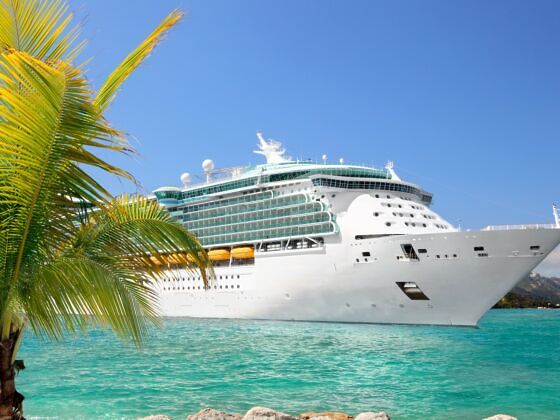Another month, another norovirus outbreak on a cruise ship. On March 12, reports started to surface that 98 passengers and 12 crew members tested positive for the virus on a Holland America Line cruise that left San Diego on February 17, with planned stops in Hawai’i and French Polynesia. It marks the third instance in the first three months of 2024 to be listed on the Centers for Disease Control and Prevention (CDC) tracker.


2024 Is Already Shaping Up to Be the Year of Cruise Ship Norovirus Cases
The cruise industry’s norovirus year started early. The Celebrity Cruises Constellation ship left from Tampa, Florida, on January 3 with planned stops in New Orleans, Belize, and Mexico. Shortly after, 92 of 2,056 guests and eight crew members were reported ill with vomiting and diarrhea during a norovirus outbreak, according to USA Today. Then, in February, more than 150 people were confirmed with norovirus on Cunard Line’s Queen Victoria that departed from England with stops in Florida and San Francisco.
That’s not counting the Norwegian Dawn incident in late February, which was originally reported as cholera but was changed to a “stomach-related illness.” Or, in the words of a Matador editor on the ship, “plenty of cases of stomach-related illnesses. Of the frequent stomach-related illnesses on cruise ships, norovirus is the most common.”
2024 is surely starting strong after what was a breakout year for norovirus in 2023. The CDC, which is the only agency tracking norovirus outbreaks on cruise ships and only follows up on outbreaks on ships that dock in United States ports, recorded the highest disease outbreak incidence rate in 10 years in 2023. That year saw 14 outbreaks that met the public notification threshold, and 13 of those were from norovirus (the other was due to Salmonella and E. Coli).
Norovirus is neither novel nor exceptional. Tens of millions of people get it every year, and the CDC lists it as the “leading cause of vomiting and diarrhea, and foodborne illness in the United States.” It spreads easily, is hard to build immunity against because there are different types of noroviruses, and it’s unknown how long protection lasts even if someone does get antibodies for one particular strain.
It’s easy to pass — especially with raw foods, though norovirus can withstand heat up to 145 degrees Fahrenheit — and hand sanitizer is not super effective. Norovirus can quickly travel from one cook’s unwashed hands to dozens of plates in front of diners.
Diarrhea, vomiting, nausea, and stomach pain are the most common norovirus symptoms, followed by fever, headache, and body aches. It’s often accompanied by stomach or intestine inflammation, or acute gastroenteritis. Symptoms start 12-to-48 hours after exposure, and last for up to three days (though people can stay contagious for longer).
In the grand scheme of things, norovirus is not solely a cruise ship problem. Industry officials are all too eager to point out to the press that an estimated 1 percent of norovirus cases tracked by the CDC are on or from cruise ships. Schools, nursing homes, hospitals, and restaurants make up the vast majority of root sources. But it’s important to put those numbers in perspective.
The total number of cruise passengers in 2023 isn’t available as of writing, but the industry source Cruise Lines International Association (CLIA) forecasted 31.5 million people around the world went on a cruise last year. Numbers from Statista point to just under 12 million American passengers in 2022, the latest year that numbers are available. That amounts to about 3 percent of the US population. So yes, comparatively few norovirus cases are tied to cruises, but that 1 percent of norovirus cases stemming from cruise ships has new meaning when considering the comparatively miniscule number of people who are cruising compared to the number of people going to restaurants, healthcare facilities, and schools.
There’s simply no getting around the fact that the likelihood of getting norovirus is statistically higher on a cruise ship than it is when you go to any random restaurant, classroom, or hospital in the country.
It’s hard to blame cruise ships. People get sick when traveling, and that’s a tale as old as time. Whose responsibility, of course, is harder to pin down, and CLIA makes it pretty clear where the industry stands: “All of the efforts made by cruise ship crews cannot replace the responsibility that rests with each and every individual. Passengers and crew alike must also be committed to keeping themselves, their family and their fellow travelers healthy.”
There’s only so much that one can do. A 2005 study in the journal Emerging Infectious Diseases studies norovirus transmission on a cruise ship that had back-to-back-to-back itineraries. It found that after passengers on the first cruise came down with the illness, the new passengers on the second and third cruises were infected with the same strain of the virus as well as new strains (as determined by genetic sequencing). This is despite the fact that the ship was sanitized before the second boarding. Three more cruises on the ship had higher positive cases than background levels, but stayed below the 3 percent threshold of calling it a big outbreak.
All that’s left to see is whether cruise lines can figure out a way to get ahead of the issue in a year when cruises are undeniably booming with at least 35 around-the-world cruises to choose from.